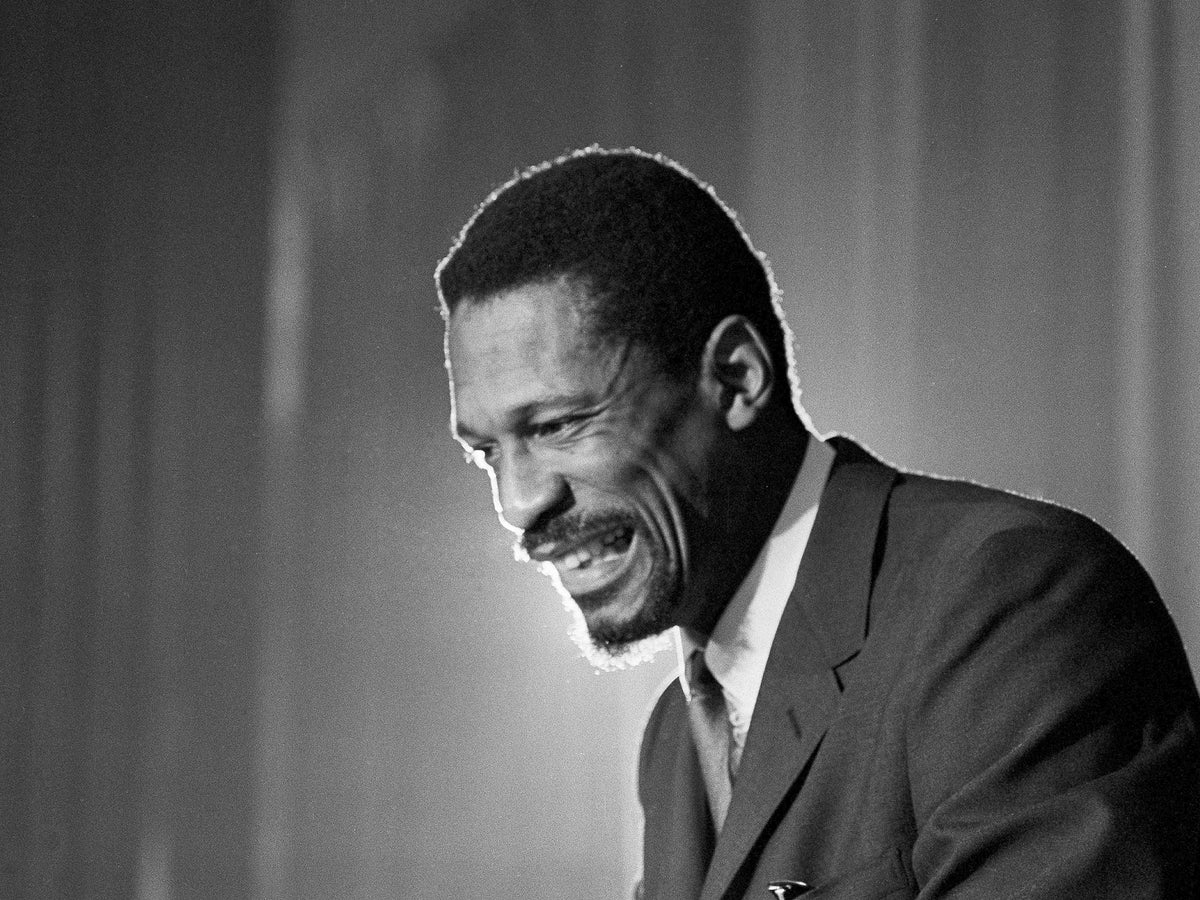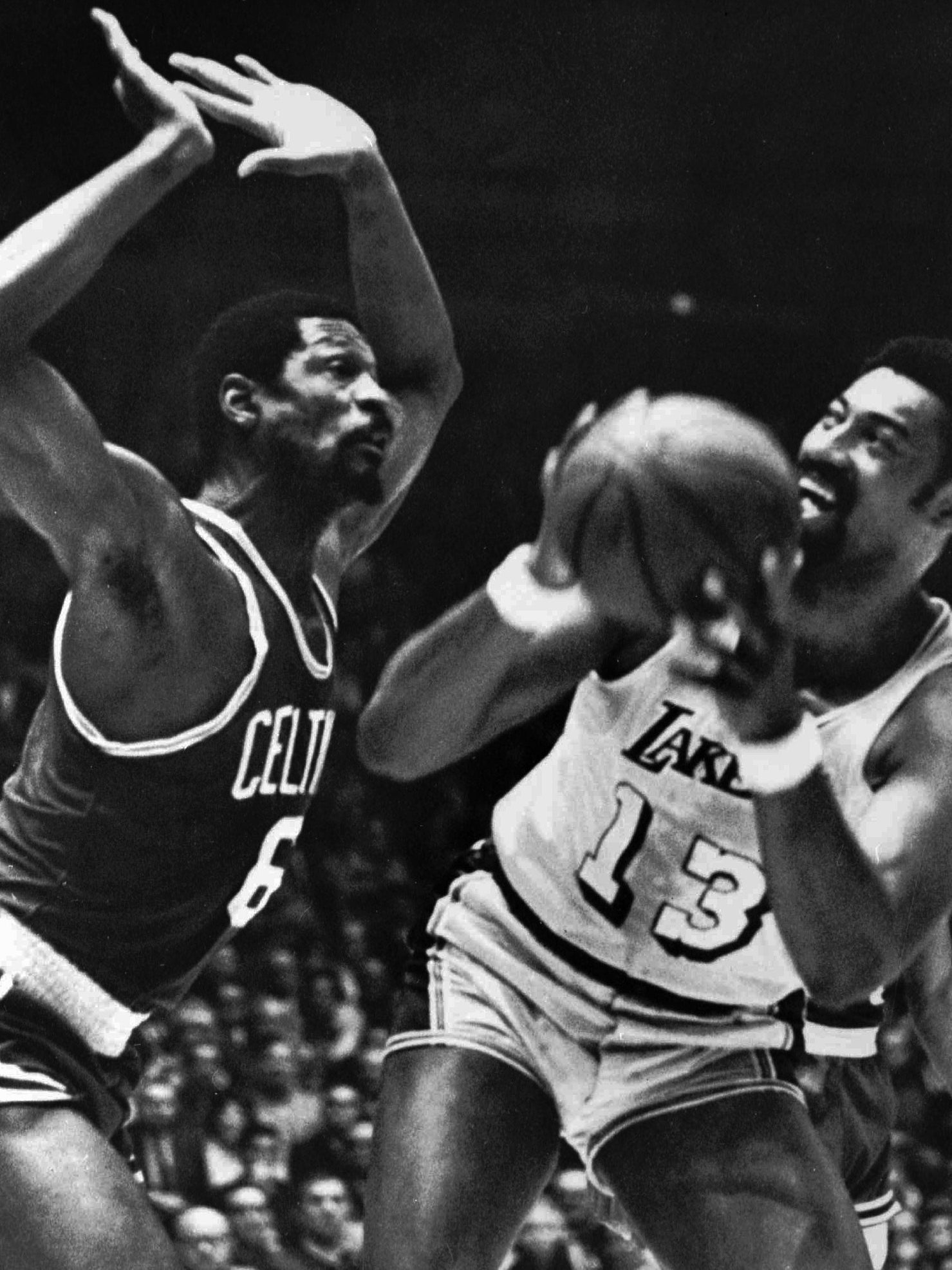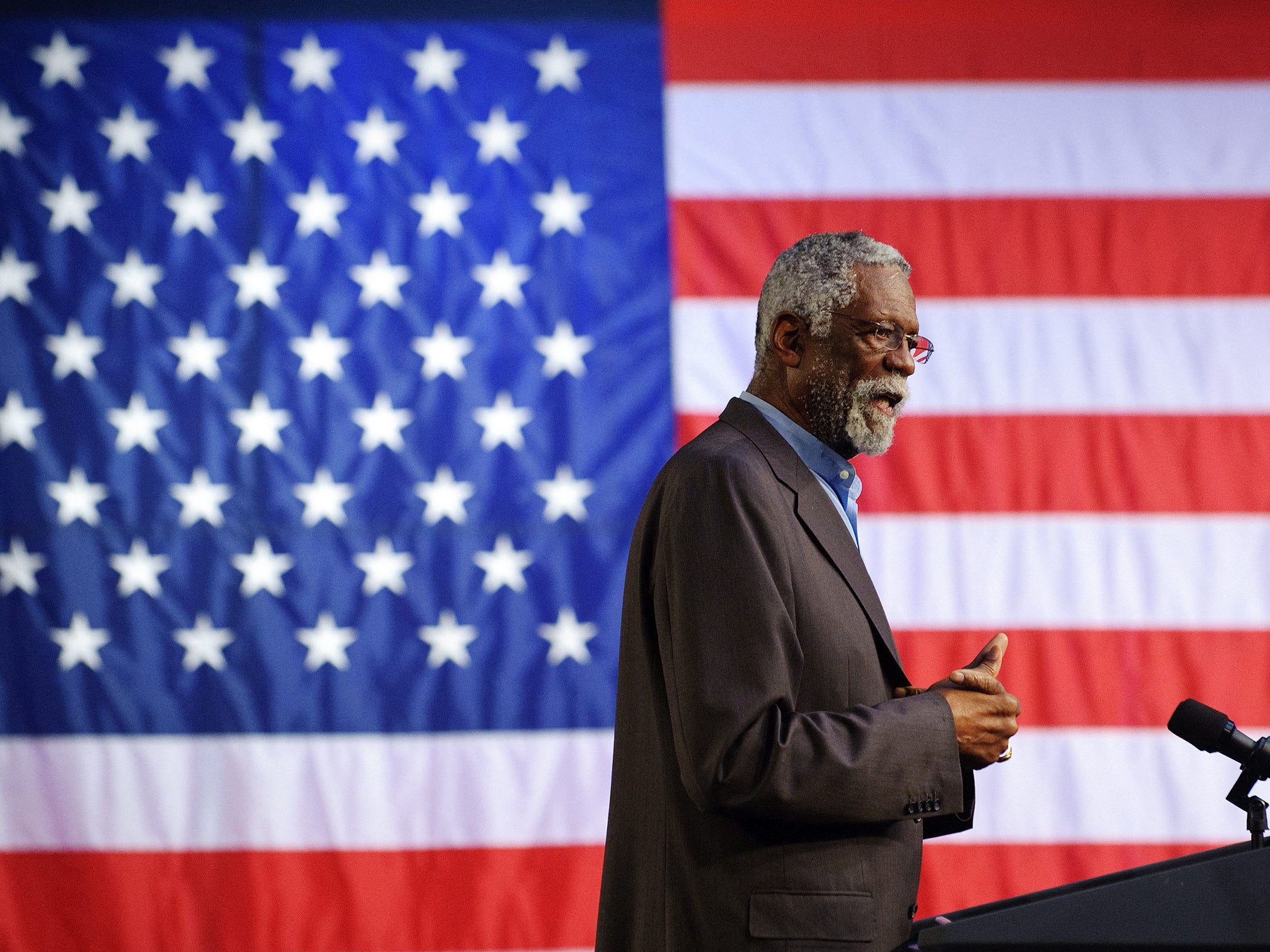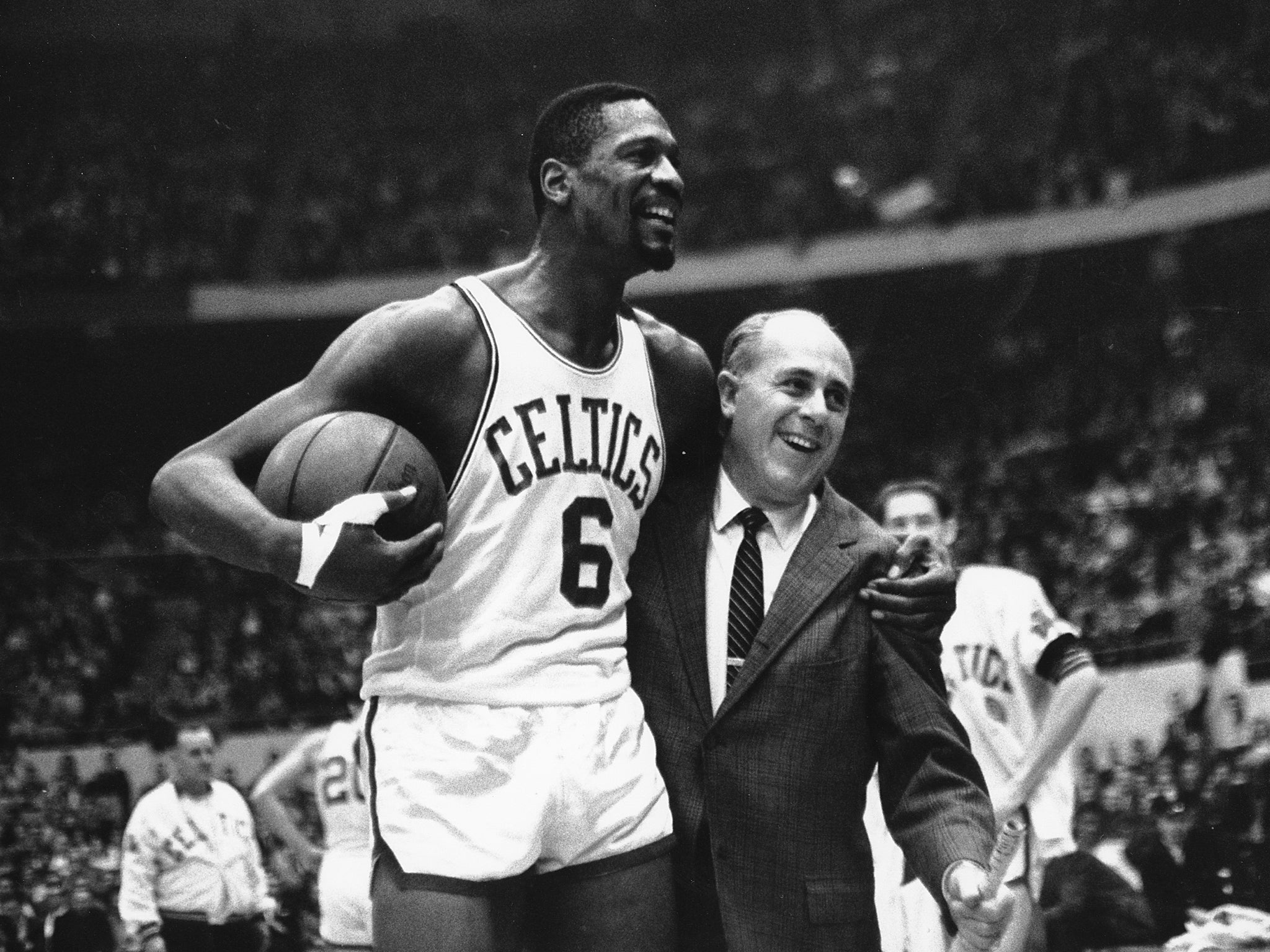
Throughout his basketball career, Bill Russell compiled a legacy of championship achievement unparalleled in any sport. As the dominant defensive player of his generation, he won an Olympic gold medal for the US basketball team in 1956, then over the next 13 years led the Boston Celtics to 11 National Basketball Association (NBA) championships.
As the cornerstone of the franchise’s dynasty of the 1950s and 1960s, Russell won enduring renown as the most successful player in the history of team sports. When the Celtics named him head coach in 1966, he became the first black man to hold that role in a major professional sport in the US.
Russell, who has died aged 88, was indomitable on and off the court and one of the most fascinating public figures to straddle sports and civil rights. He was intensely driven and innovative as an athlete, notably when pitted in electrifying match-ups against Wilt Chamberlain, the dominant scorer of the era. Their rivalry elevated the popularity of the NBA.
In his prime, the goateed, broad-shouldered Russell was 220 pounds of lean muscle stretched over a 6ft 9in frame. Fast and agile, he had a superior vertical leap and used his 7ft 4in wingspan to block shots with his arm outstretched like a bowsprit. With his athletic shot-blocking and rebounding skills, he revolutionised the way basketball was played on defence.
Russell’s physical gifts were complemented by an intellectual curiosity about other aspects of the game, such as shot trajectory, rebounding angles, human psychology and gamesmanship. He was known to needle opponents on the court, engage in trash talk, research players’ habits and aggressively block shots early in games. He once wrote that he knew he couldn’t block all shots but a few resounding blocks were more than enough to throw an opposing player off his game.
Amid the celebration of his prowess as a player, Russell also struggled with the festering problems of prejudice and segregation. Born in the Jim Crow South, he was often described as private, introspective, prickly and principled, a man who searched for ways, as he once wrote in a book introduction, for his children to grow up “as we could not ... equal ... and understanding”.
As early as 1958, he accused the NBA of using a quota system to limit the number of black players on each team. He took part in civil rights marches with Martin Luther King Jr but questioned the nonviolent strategy of the movement, arguing that African Americans had a right to defend themselves.
When civil rights leader Medgar Evers was assassinated in Jackson, Mississippi, in 1963, Russell accepted an offer by Evers’s older brother, Charles, to run a youth basketball camp in Jackson, to bring white and black children together. He received death threats but refused to back away from his views.
Russell’s steely outward personality and pointed manner of speaking didn’t endear him to some fans in Boston, which had a long history of racism. The Boston Red Sox baseball team didn’t integrate until 1959, and protests in Boston over federal court-ordered school desegregation in the 1970s were among the most violent in the country.

Many fans perceived Russell to be aloof because for years he refused to sign autographs, preferring a handshake and conversation. He described Boston as a “flea market of racism” in his 1979 book, Second Wind: Memoirs of an Opinionated Man.
Despite his success with the Celtics – the team had never won a championship before his arrival – Russell did not receive local business endorsements and found himself shut out of exclusive neighbourhoods when he was looking to buy a house. In 1968, his suburban Boston home was broken into and ransacked. Racial epithets were written on the walls, and faeces were left on his bed.
“It had all varieties, old and new, and in their most virulent form,” he wrote in Second Wind. “The city had corrupt, city hall-crony racists, brick-throwing, send-’em-back-to-Africa racists, and in the university areas phony radical-chic racists ... Other than that, I liked the city.”
He refused to sign off on a public ceremony in 1972 to retire his Celtics jersey, and in 1975 he declined to attend his induction into the Naismith Memorial Basketball Hall of Fame, upset that he would be the first African American player to be enshrined.
“We foolishly lionise athletes and make them heroes because they can hit a ball or catch one,” Russell once said. “The only athletes we should bother with attaching any particular importance to are those like [Muhammad] Ali, whom we can admire for themselves and not for their incidental athletic abilities.”
In 2010, President Barack Obama awarded Russell the Presidential Medal of Freedom for both his athletic accomplishments and his advocacy for human rights.

William Felton Russell was born in Louisiana on 12 February 1934, and his father worked in a paper bag factory. His childhood was filled with searing memories of prejudice, with daily indignities and outright threats directed at his mother and father.
When he was nine, his family moved to California, in the hope of escaping the institutionalised segregation of the South. His father found work in a war production plant. Russell described the public housing projects of Oakland as tough and dangerous but paradise compared with Louisiana. His parents separated, and his mother died a few years later.
Tall and uncoordinated as a youth, Russell tried basketball for the first time in junior high school but failed to make the team. He later got a spot on his high school’s junior varsity team only because of a sympathetic coach. It was a turn of events that likely spared his life from the violent streets of the inner city.
Russell received only one college scholarship offer, from the University of San Francisco, a small Jesuit school that had no history of athletic excellence. Russell led the USF Dons to consecutive NCAA championships in 1955 and 1956 and was acclaimed as a first-team all-American both years. One of his college teammates, KC Jones, joined him on the Celtics and had a Hall of Fame career in his own right.
In addition to starring on the basketball court, Russell was one of the country’s premier high jumpers in the 1950s.
Despite Russell’s success at the amateur level, some NBA scouts remained dubious of the value of a defence-oriented centre. Celtics coach Red Auerbach didn't harbour such doubts. He engineered a trade to acquire the draft rights to Russell in 1956, sensing how his style of play could help the team’s roster of future Hall of Famers.

After missing almost half his rookie season, while leading the US Olympic basketball team to a gold medal, Russell quickly claimed a spot in the Celtics line-up and helped lead the team to its first NBA championship in 1957.
An ankle injury sidelined Russell in his second year, when the Celtics lost in the NBA finals to the St Louis Hawks. Boston then won eight consecutive titles under Auerbach and two more in 1967-1968 and 1968-1969, after Russell had taken over as player-coach.
In his professional career, Russell scored 14,522 career points (15.1 points a game) and grabbed 21,620 rebounds. His average of 22.5 rebounds per game ranks second only to Chamberlain’s 22.9 in NBA history.
Russell also set the standard for shot-blocking, even though the NBA didn’t record blocked shots as an official statistic until 1973, after he had retired.
During his career, Russell made 12 NBA All-Star Game appearances, earned five rebounding titles and was named the league’s most valuable player five times. In 1980, the country’s basketball writers voted him “the greatest player in the history of the NBA”.
Russell retired from basketball in 1969, drove his car across the country and settled in Mercer Island, Washington. After a period of solitude, he worked as a network broadcast commentator for NBA games and acted in a handful of films and television shows before returning to basketball as coach and general manager of the Seattle SuperSonics from 1973 to 1977. He was coach of the Sacramento Kings in 1987 and vice president of the team’s basketball operations until 1989.
His marriages to Rose Swisher, his college sweetheart, and Dorothy Anstett ended in divorce. His third wife, Marilyn Nault, died in 2009. Survivors include three children from his first marriage.
In a sign that relations between Russell and Boston were beginning to improve, Russell made several trips back to the city, including for a 1999 ceremony when the Celtics re-retired his No 6. At other gatherings, he appeared before standing ovations with his old teammates – among them Sam Jones, John Havlicek and Tom Heinsohn – to mark the anniversaries of their championships.
In 2013, a statue of Russell was unveiled at Boston’s City Hall Plaza. He agreed to the monument only after city officials pledged to establish a grant to fund a youth mentoring programme. The statue shows Russell, knees bent, with a ball in his hands ready to make a chest pass, an image of the consummate unselfish teammate. The stone is engraved with a quotation from Russell: “The most important measure of how good a game I'd played was how much better I’d made my teammates play.”
Bill Russell, basketball player, born 12 February 1934, died 31 July 2022
© The Washington Post







